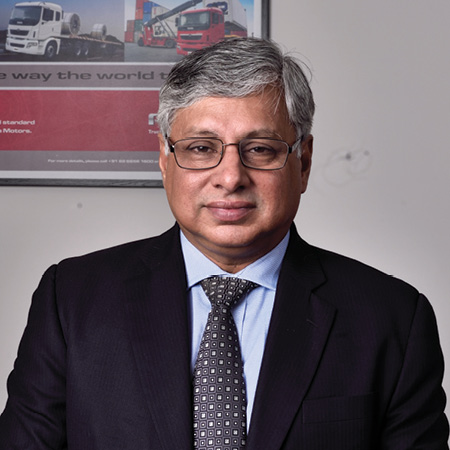With more than 60,000 employees, a turnover of US$42 billion and well over 6,000 sales and service locations, Tata Motors is a force to be reckoned with. Founded in 1945, the Indian-headquartered business forms part of the multinational conglomerate Tata Group, which consists of 100-plus operating companies in just as many locations around the world.
Tata Motors itself is made up of multiple companies too — it has a strong global network of subsidiaries and associate organisations, such as Jaguar Land Rover in the UK and Tata Daewoo in South Korea. Over the years it has built its brand up to be a leading global automobile manufacturer with a portfolio that covers a wide range of cars, sports vehicles, buses (it’s the 4th largest manufacturer worldwide), trucks and defence vehicles (since the late 50s it has been a strategic partner to the Indian Armed Forces).
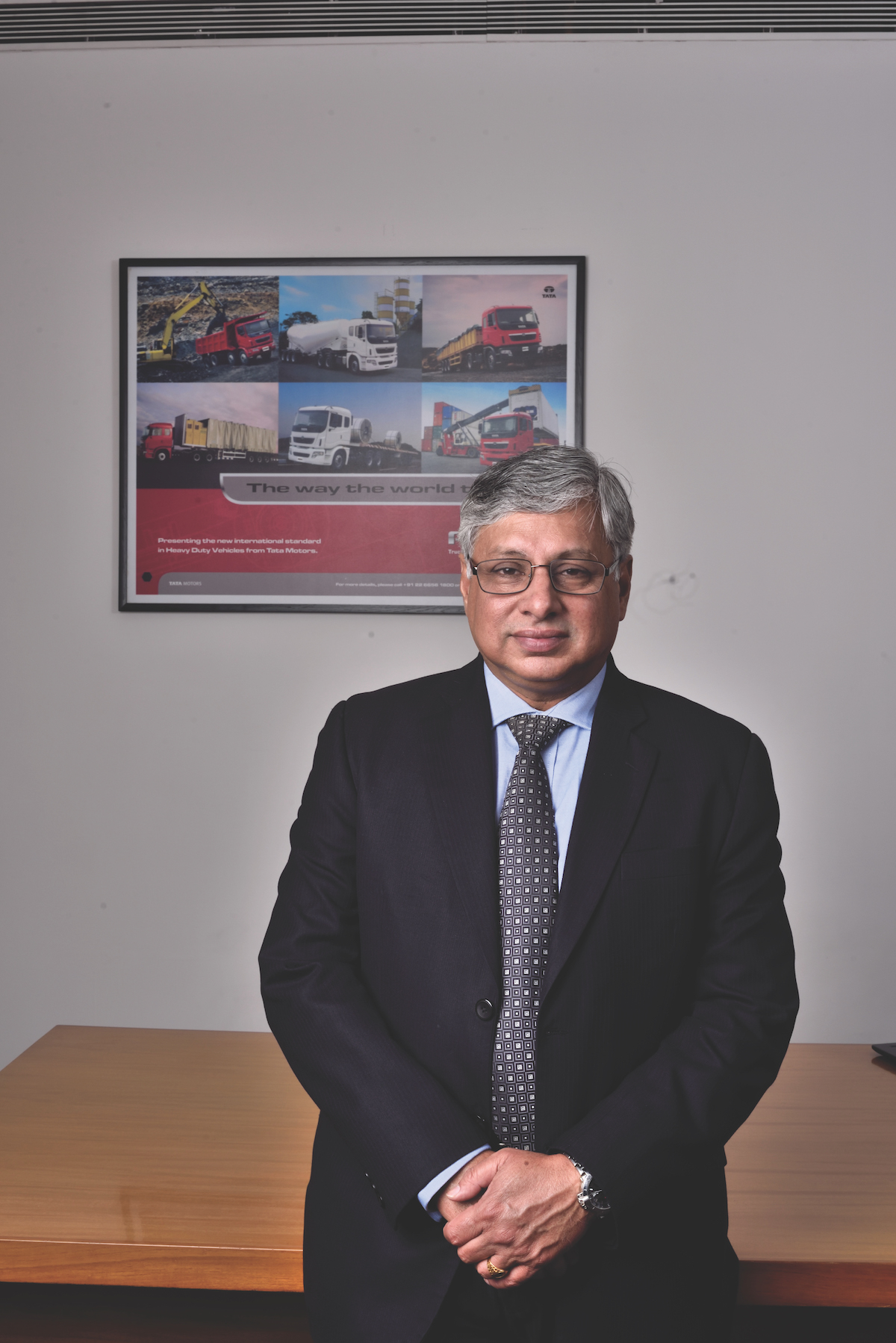
Sustainability and the concept of giving back to the societies it operates in is an integral part of its operations, as is its two overarching values of customer centricity and technology. Through its deep understanding of the customer’s wants and needs, it has consistently brought innovation to the business; ultimately revolutionising the landscape in India and beyond. All of these elements have culminated to create an undeniable success story.
Know-how for commercial and passenger vehicles
Tata Motors is made up of two divisions — commercial vehicles and passenger vehicles. While both have a history of achieving great feats, the commercial segment has been particularly robust. Ravindra Pisharody is the Executive Director of Commercial Vehicles and he has been with the company for almost a decade. An engineer by trade with an MBA, he initially joined in 2007 as the Vice President of Commercial Vehicles (Sales and Marketing). After 5 years he was appointed to his current position to take Commercial Vehicles forward.
For Ravindra, it has been a real privilege and honour to be involved in the evolution of such a well-respected brand. “It has been a wonderful ride and there is plenty more to look forward to,” he says. Prior to joining Tata Motors, Ravindra worked with several different companies. “I started my career with Philips India in the consumer electronics business,” he recalls. “I was there for 18 years and held various positions.
This eventually led to me becoming the Head of Consumer Electronics in the Indian operations. For the eight years following that I was at Castrol, a British lubricants company which was acquired by BP [British Petroleum] very soon after I joined.
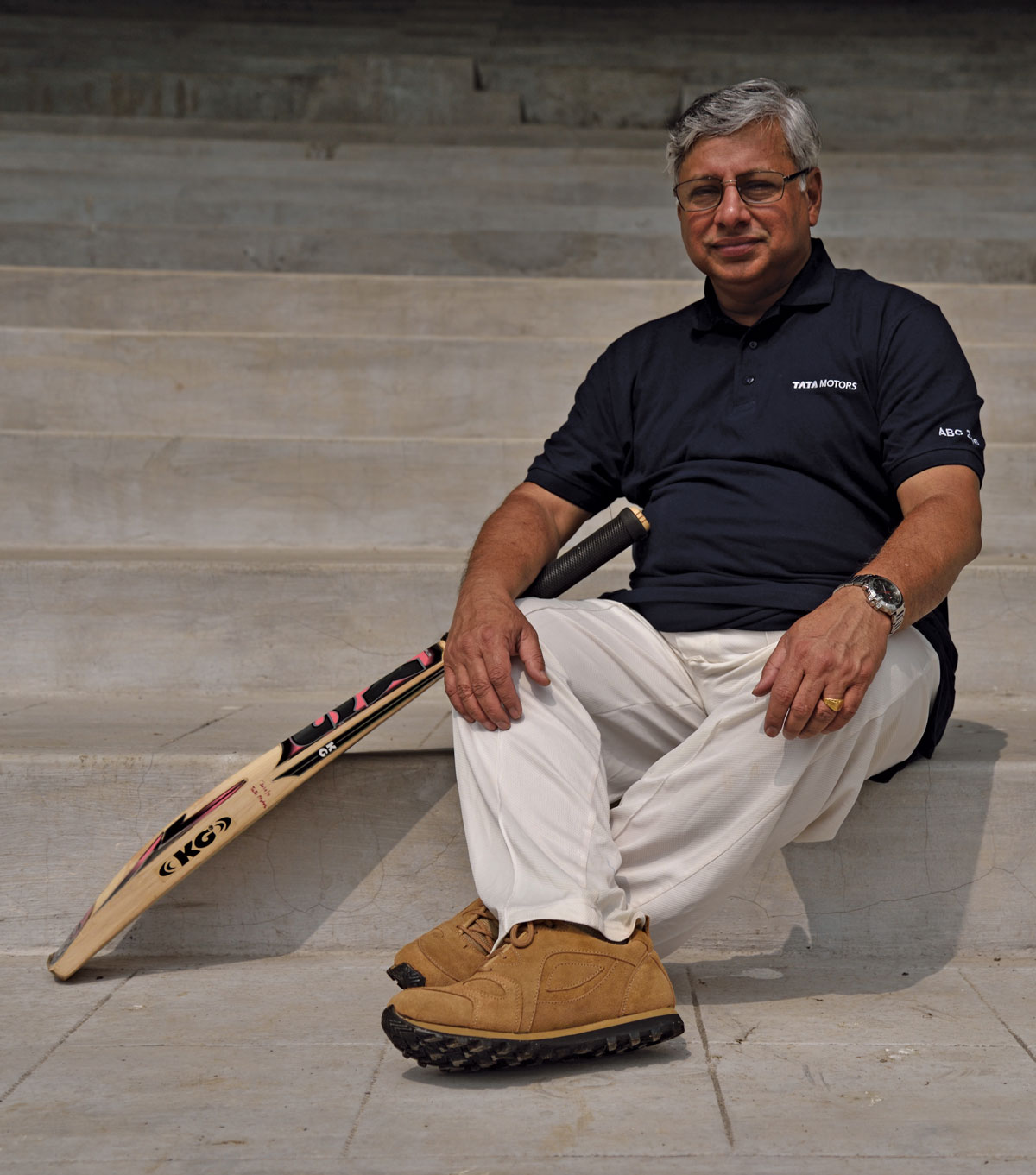
Initially I was the Marketing Director for the region comprising of Africa, the Middle East and India, and then the last three years were spent in Singapore in a global category role for two-wheeler and motorcycle products. When I came back to India after my Singapore stint I felt I wanted to move on and Tata Motors was the company I opted to join at that time.
“It was a company with a robust legacy and it was in a strong period of growth. It was ambitious with global acquisitions and it was confident about defending its position in India. Given my consumer, durable brand and automotive background, I thought Tata Motors would be a great fit for me.”
Outside India
This has proved itself to be true. Ravindra has been able to play an important role in the future direction of the Commercial Vehicles part of the Tata Motors business. When he initially joined the company, his focus was predominantly on the domestic side of things and he took charge of all the manufacturing and product development setups. Then, upon later becoming an Executive Director, his approach took a starkly different turn — his biggest concern becoming the countries and regions outside of India.
“That was a huge change in focus,” he says, “and something that’s still top of my radar now. We are already one of the top 5 commercial vehicle players in the world but we still have an aspiration to grow our presence even further. Despite being heavily dependent on the markets in India, our export business is something that has been growing steadily and is very strong. Today we have operations in more than 40 countries around the world and we have been launching and stabilising some world-class product platforms in the period of 2011 to 2016. That has been a key focus area.”
In addition to his Executive Director position, Ravindra also sits on the Boards of several overseas Tata Motors ventures, in countries such as Thailand, Indonesia and South Africa. “As an Executive Director of a publically listed company, with a board consisting of independent Directors as well as promoted Directors, there are some governance and fiduciary responsibilities which I did not have before I took on my current role in 2012. That has provided me with ample opportunities to take Commercial Vehicles to new heights.”
During Ravindra’s journey with the company, he has developed a personal leadership philosophy, and this has been shaped by the exposure he has had to all aspects of Tata Motors in many different parts of the world. And everything pivots upon one thing — relationships.
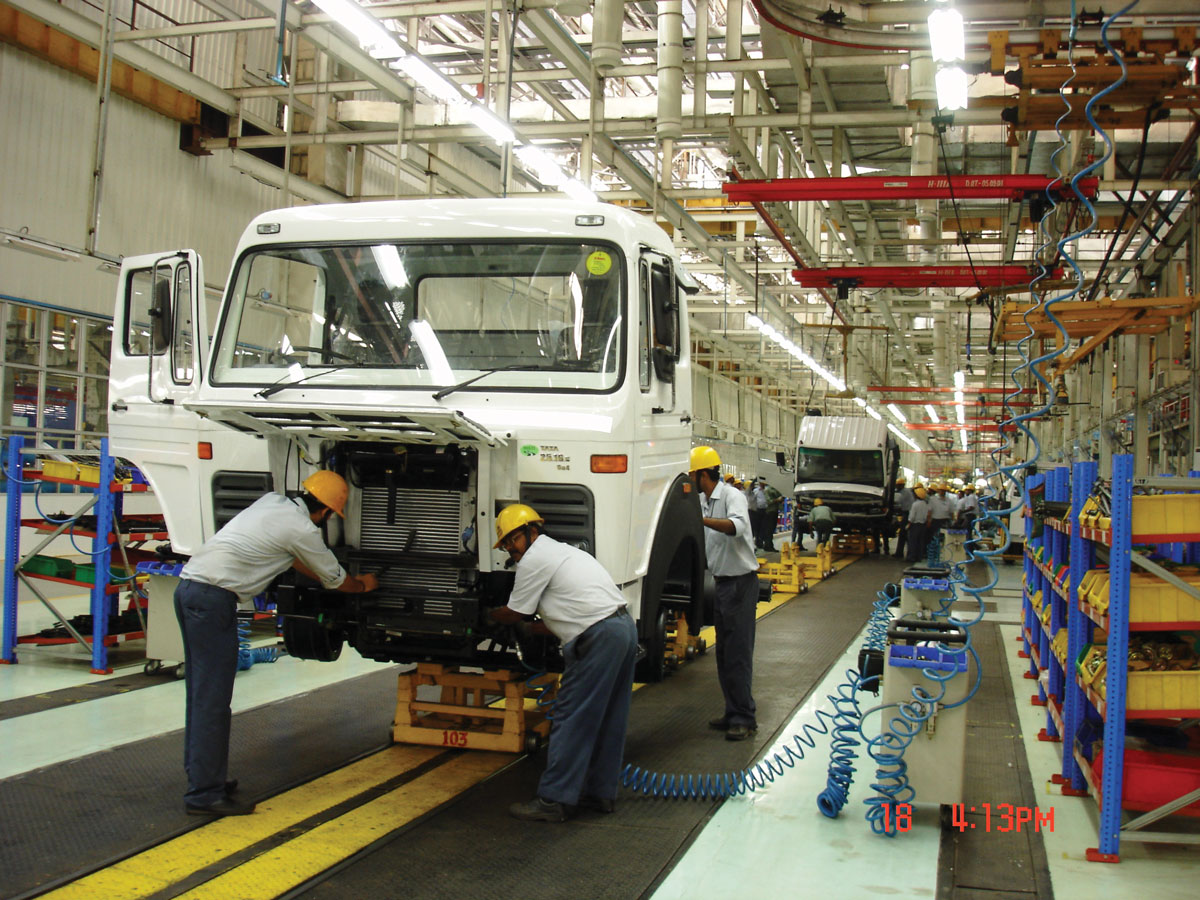
Deep understanding of the customer
“I think one of my strength areas is customer relationships and customer intimacy,” he shares. “This is particularly important when we operate in markets like India, Indonesia, Thailand, and so on. These are markets where there is a desire to purchase a brand and there is a sense of pride associated with owning well known brands; however, the premium a customer is willing to pay for a brand is relatively frugal. I think building in a superior package of feature specifications, at a price which is somewhat premium, but not exorbitantly high, is something we believe is an important aspect of running business today, particularly if the business is sensitive to countries like India.
We are a company that is steeped in the past but one that is also willing to embrace modern features and technology.
“Furthermore, we have a huge ecosystem — not just in regard to employees, but also in terms of customers, dealers, vendors and suppliers. Working closely with them and appreciating their problems is important. We don’t want to be seen as exploitative, where it is only our interests that are important. One thing I truly believe is that you can’t be alone in business — you need support from your suppliers to build the position you have in the marketplace.”
This commitment to relationship building is something which Ravindra sees as a key strength to Tata Motors.
When it comes to customers, the business is focused on delivering value and has a feedback system in place to ensure it’s delivering on the right things.
‘This is not an industry where a lot of new people come in’
“A lot of what we have implemented has been based on customer feedback,” he explains. “Some of our customers are actually second and third generation business owners because this is not an industry where a lot of new people come in; it’s a really tough sector to be in. Some of our customers are people whose fathers and grandfathers started their businesses with Tata Motors back in the 50s, so what we are doing now is investing in and maintaining those relationships because there are a lot of different options for our customers out there. We need to look after the people who have been loyal to us.
“We are also recognising that today’s third-generation customer, who is in his or her twenties and thirties, has started taking over the family business and they are quite different from their parents and grandparents who were at the helm before. They are very IT savvy and they are extremely open to new ideas. We are trying to build up the fact that we are a company that is steeped in the past but one that is also willing to embrace modern features and technologies. This is what the customer of today wants and this is what we are striving to deliver. We are essentially trying to build a link with this new generation of customers.
Younger generations know technology
“One part of that is organising training programs. We hadn’t done this in the past but it is proving to be a worthwhile exercise because we are able to learn as much from our customers as they learn from us. The younger generation are very knowledgeable when it comes to technology and tapping into that can be beneficial to the business.”
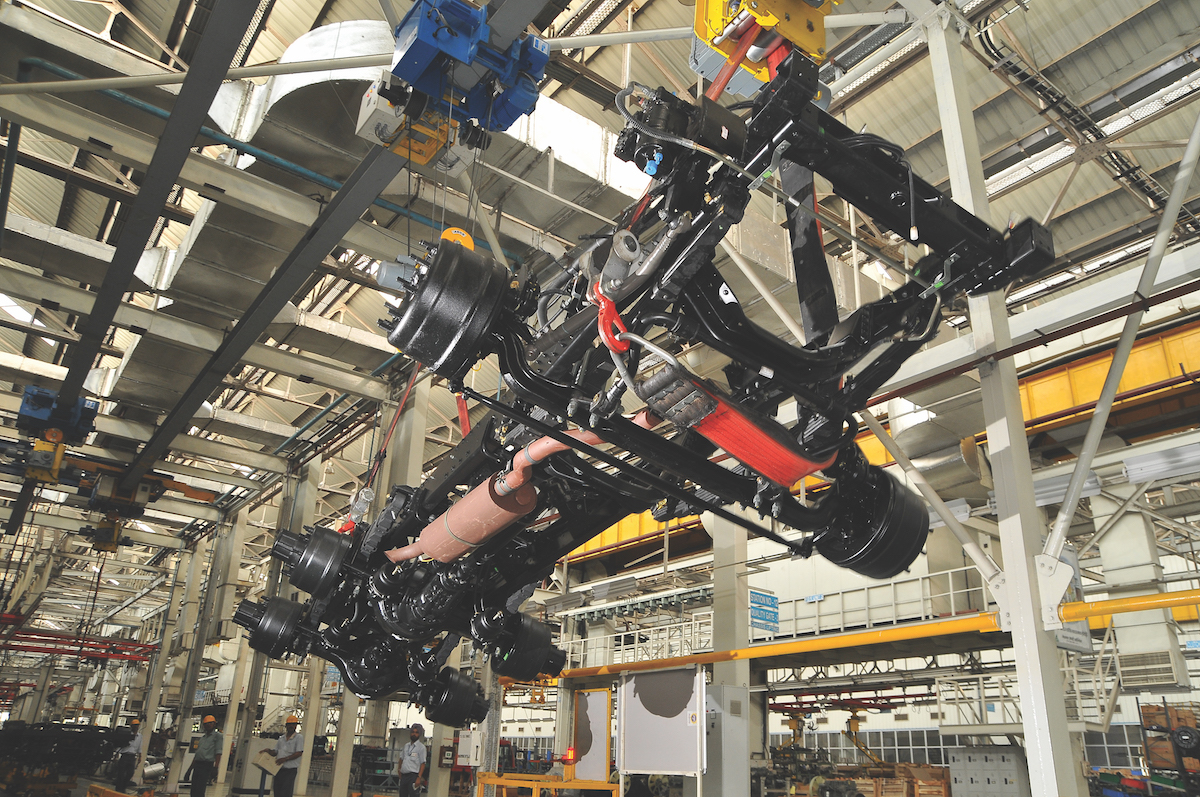
Some of our dealerships are really large operations with thousands of staff and very significant turnovers and profits.
Then there are the relationships with the dealerships in India and other parts of the world that Tata Motors has to nurture and develop. The company has longstanding dealings with many of them and Ravindra says that keeping the lines of communication open with them is a way of achieving mutual success. “Our dealerships are setup like a franchise operation,” Ravindra notes. “People talk about McDonald’s or Starbucks as a franchise operation and ours is not that different, because we have our internal sales team, who in addition to maintaining relationships with key account customers, also focus heavily on training the dealer sales force and the health of the dealership where the actual transactions take place. Some of our dealerships are really large operations with thousands of staff and very significant turnovers and profits, so essentially they are ambassadors for the Tata brand.
They are proud to be associated with us and we are proud to be associated with them.
Nurturing dealers
“When dealers are struggling or when they fail, which is extremely rare, we nurture them to help them survive. This is the reason why it takes us a couple of years to decide whether a new dealership should be opened up. What we do is employ a great deal of due diligence around the dealership we are appointing to ensure that we are making the right decision.
“I think the relationships we have with our dealers are based around the fact that they are an extension of the Tata Motors company; it is almost like they are a part of our family. And with the new generation of customers coming in we have to be alert to the fact that working closely with our dealerships gives us an opportunity to expand our portfolio of innovative technologies.”
Finally, there are the supply-chain relations — another important part of Tata Motors’ long and successful journey. Ravindra says that many of the companies Tata Motors works with have actually grown alongside it over many years, some for more than four or five decades. “I think the profile of our suppliers is changing rapidly, much like our customers,” he says. “Especially given the fact that when Tata Motors started in its earliest factory in Jamshedpur, which is in the eastern part of the country, the vendor base did not yet exist. Tata Motors was one of the first companies to start automobile production facilities in India, which made up a large proportion of the British or Western imports that entered the country during the 50s. Many of our vendors directly started their businesses solely to work with Tata Motors.
“When you contrast that to the last 10 years, with the interest around India picking up, a lot of the Western-world’s global vendors have come into the sector, whether that be German, American or perhaps Japanese companies. Initially we had problems in asking them to set up manufacturing facilities in India but we pushed for it because localisation is an important way to keep costs down. Today, that’s not a discussion at all. All of the best original equipment manufacturers are here; the power train, the component producers, they are already in India as part of their multinational operations.”
Heritage vendors as well as global vendors
This has resulted in a strong point of differentiation for Tata Motors. The business boasts having both heritage vendors and global vendors; something new competitors coming into the market are not lucky enough to have. “In a sense we have a transition playing out,” Ravindra continues. “In most cases the heritage vendors have been able to improve their skills and financial capabilities; they are not just a small family operation anymore, but part of big multinational brands. They are achieving great successes in their own right.”
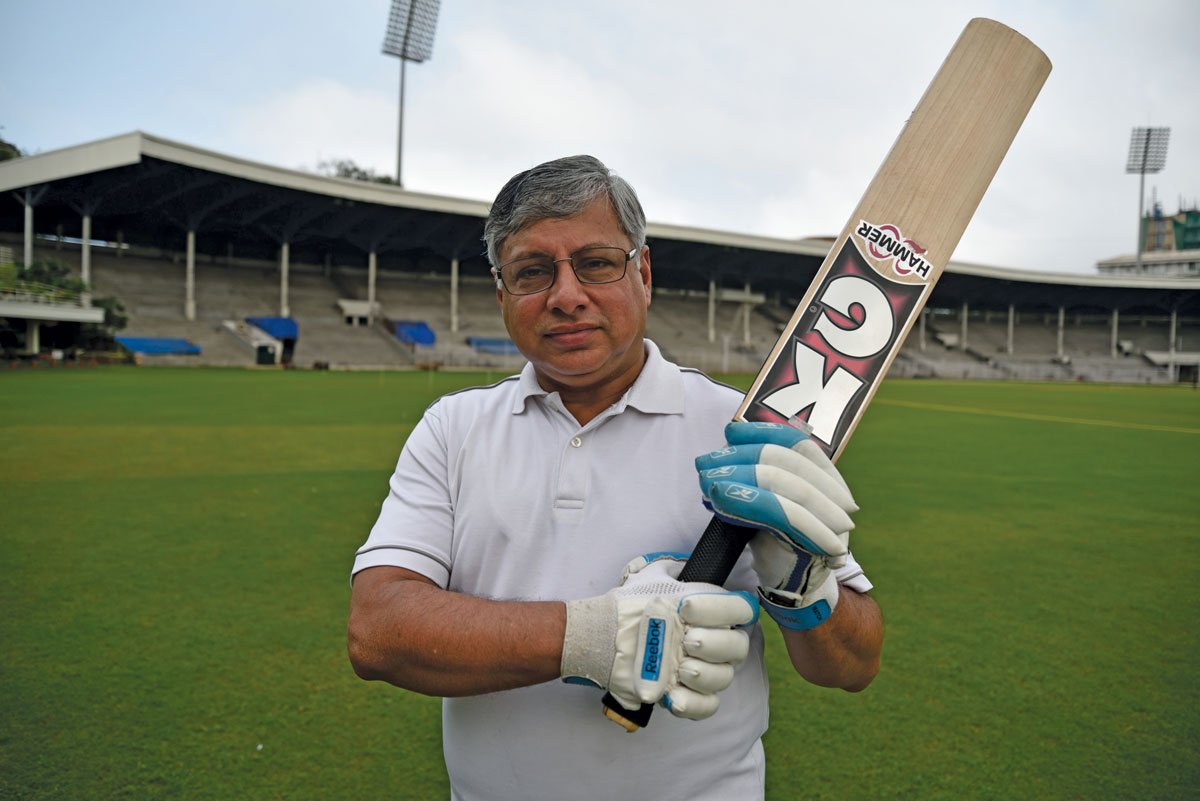
One of the factors which has enabled us to be in this leadership position in some of our chosen markets is the fact that we have very strong relationships with our customer segments; we know how to keep them happy, and having the latest technologies available is a strong part of that.
To effectively manage these relationships, Tata Motors has created special vendor councils, of which the committee members are the leading suppliers from across the country. These forums allow for open discussions about any concerns, issues or opportunities. The business also has dealer councils set up for the same reasons. Ravindra shares that the education and training of all people involved in the business is an important part of the Tata Motors philosophy, and that this particularly rings true when it comes to the introduction of new technologies.
The business has 3 R&D centres — in India, the UK and South Korea — and these facilities focus on issues such as engine performance, fuel efficiency and safety. Each are equipped with state-of-the-art equipment such as Asia’s first anechoic chamber, India’s first full vehicle crash test site and India’s only full-climate test facility. Tata Motors employs more than 4,500 engineers, scientists and technicians who work on groundbreaking innovations in these centres to drive the form and performance of the vehicles it puts to market.
“One of the factors which has enabled us to be in this leadership position in some of our chosen markets is the fact that we have a very strong relationship with our customer segments; we know how to keep them happy and having the latest technologies available is a strong part of that,” Ravindra shares.
We are keen to see, particularly on the passenger side, options for hybrid buses and trucks, as well as fully electric vehicles. In fact, we have recently had the first commercial order come through for a hybrid bus in Mumbai City. We have been investing in electric vehicles as well.
“Commercial vehicle customers buy products that they are able to make a profit from, it’s as simple as that. So unlike cars that are bought for comfort, design, style and as a status symbol, for commercial vehicle buyers this isn’t as important. It’s important up to a point, but it’s more so about how they can use this vehicle to make a profit.
Reducing the overall cost to the operator
“Due to this we have been heavily focused on what we call the ‘cost of operations’ of our customers — this embraces fuel efficiency, financing, availability of spare parts at reasonable prices, and maintenance contracts. The service intervals are becoming longer and we are basically employing all the technological innovations that we possibly can to reduce the overall cost to the operator. We have been at the forefront of leading this movement in India.
“To give a very basic example of this, we can look at the use of radial tyres. These are common all over the world but were only recently introduced to India. While passenger cars have been on radial tyres in India for quite some time, we decided to take the lead and introduce radial tyres for medium and heavy commercial vehicles. That was about 5 or 6 years ago.
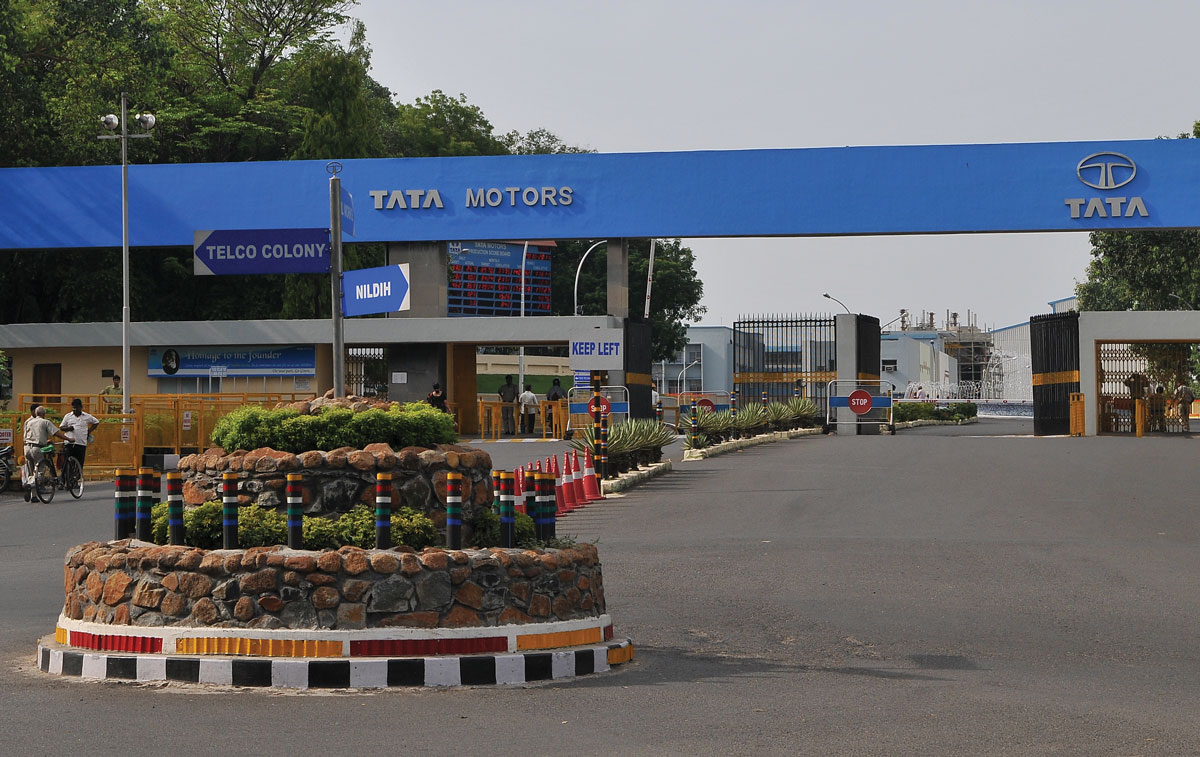
“The local tyre industry did not have the capacity to cater to this so we started with imports. We were very clear to the customer that these tyres were better for them when it came to the lifespan of the product and the fuel economy. However, we had to properly educate customers because there was a reluctance to embrace radial tyres because of initial high costs. We were the first to bring in this product and now the local industry in India is also producing such tyres for vehicles.
“Similarly, we introduced an innovation for a four-axle truck that has a lift axle connected. This is so that when the driver has a return load which is not full, one of the axles can be folded back so that the fuel economy increases. I think we have been at the forefront of bringing that type of new technology into India too.”
Another area that Tata Motors is exploring is alternative fuel sources. “We are keen to see, particularly on the passenger side, options for hybrid buses and trucks, as well as fully electric vehicles,” Ravindra says. “In fact, we have recently had the first commercial order come through for a hybrid bus in Mumbai City. We have been investing in electric vehicles as well; though it is still not clear how the commercials will pan out, as the initial costs and prices are likely to be very high.
Showcasing vehicles which use alternative fuels, as well as electric and hybrid “We are showcasing our concepts for vehicles which use alternative fuels such as CNG and LNG, as well as electric and hybrid, at the various motor shows in India. Further to that, we are prioritising safety and bringing in features like ABS, electronic control and automatic sensors. We believe that these types of technologies are going to become more and more prevalent and since we have the scale, and our vendors have the scale, we are trying to take the lead.”
Telematics — information technology which deals with the long-distance transmission of computerised information — is yet another important focus area for Tata Motors going forward. Given the geographic size of India, it is quickly becoming a handy tool as it allows customers of commercial vehicles to gain data and information quickly and easily about their vehicle fleets.
Ravindra admits that the customer demand for this type of technology has not been particularly high in the past, but with the new generation of clientele coming in, many of whom have been educated in some of the best institutes abroad, it is slowly being embraced. Tata Motors has positioned itself at the forefront of this.
“Our dealership model is somewhat different to other businesses,” Ravindra says. “We have dealers who cover large geographic territories but there might be something like ten to fifteen different dealership locations within that one territory. We have a service location every fifty kilometres in much of India and we are trying to replicate that in some of the other markets we are in, such as South East Asia and parts of the Middle East, places where the brand is already quite popular.
Easy access for service
“This means that even if a customer is having problems with their vehicle, within a 50-kilometre radius they will have access to a service centre. “Unlike a car which you might buy in Mumbai and then operate in Mumbai, a commercial vehicle might be bought in Mumbai and then taken to another part of the country within the first fifteen days. That is one reason why we are taking the lead in telematics.
“We are pleased to announce we have now started installing mandatory telematics devices in our vehicles and we have created a brand called Tata FleetMan to support this. This Tata FleetMan telematics and fleet management service system is helping our customers to increase productivity and profitability.”
We have always paced ourselves one step ahead in meeting our customer needs.
Tata FleetMan has been designed to address pressing concerns of the transport industry and is targeted at the commercial vehicle fleet owner. Using telematics, solutions to issues with fuel management, driver management and remote diagnostics can be applied. With features such as real time fleet tracking, text-message alerts, geo-fencing and trip management, Tata FleetMan is helping customers to significantly improve their own transport businesses. “Tata Motors has been in the Indian commercial vehicle space for over six decades and over that period we have developed a very deep understanding of the Indian market, bringing world-class technologies at world-class prices,” Ravindra adds.
“We have always paced ourselves one step ahead in meeting our customer needs. Tata FleetMan, completely developed in-house, further affirms our expertise in offering solutions which can transform the dynamics of the transport industry. Telematics is the way of the future and we believe that its popularity will grow exponentially, particularly in India.”
Ultimately it all comes down to one thing — a customer’s happiness. And by having so many service centres scattered across India, supported by innovative telematics tools, Tata Motors is doing what it can to ensure this. It is also focused on making sure that the sales and service experience is second to none.
“It is a priority to protect our brand image and the customer equity we have,” Ravindra states. “In the last five years, new competition has come in and that has been quite challenging for us, as most of these competitors are global companies with well-known names or local family owned businesses. Due to this we have put a lot of emphasis on the experience that our customers have when they step into one of our dealerships. We have undergone significant renovations and created world-class set ups so that at the time of the sale and then post-sale the customer has the best possible experience.
“The post-sale part is particularly important because that’s when the majority of the cost associated with operating the vehicle plays out. The installment that the customers pays when they initially purchase a vehicle is actually only 15% of the total cost. The other 80–85% goes into fuel, tyres and maintenance; so that’s where our vehicle performance has to come in. We want everyone to have a wholesome experience so that they leave as happy as possible.”
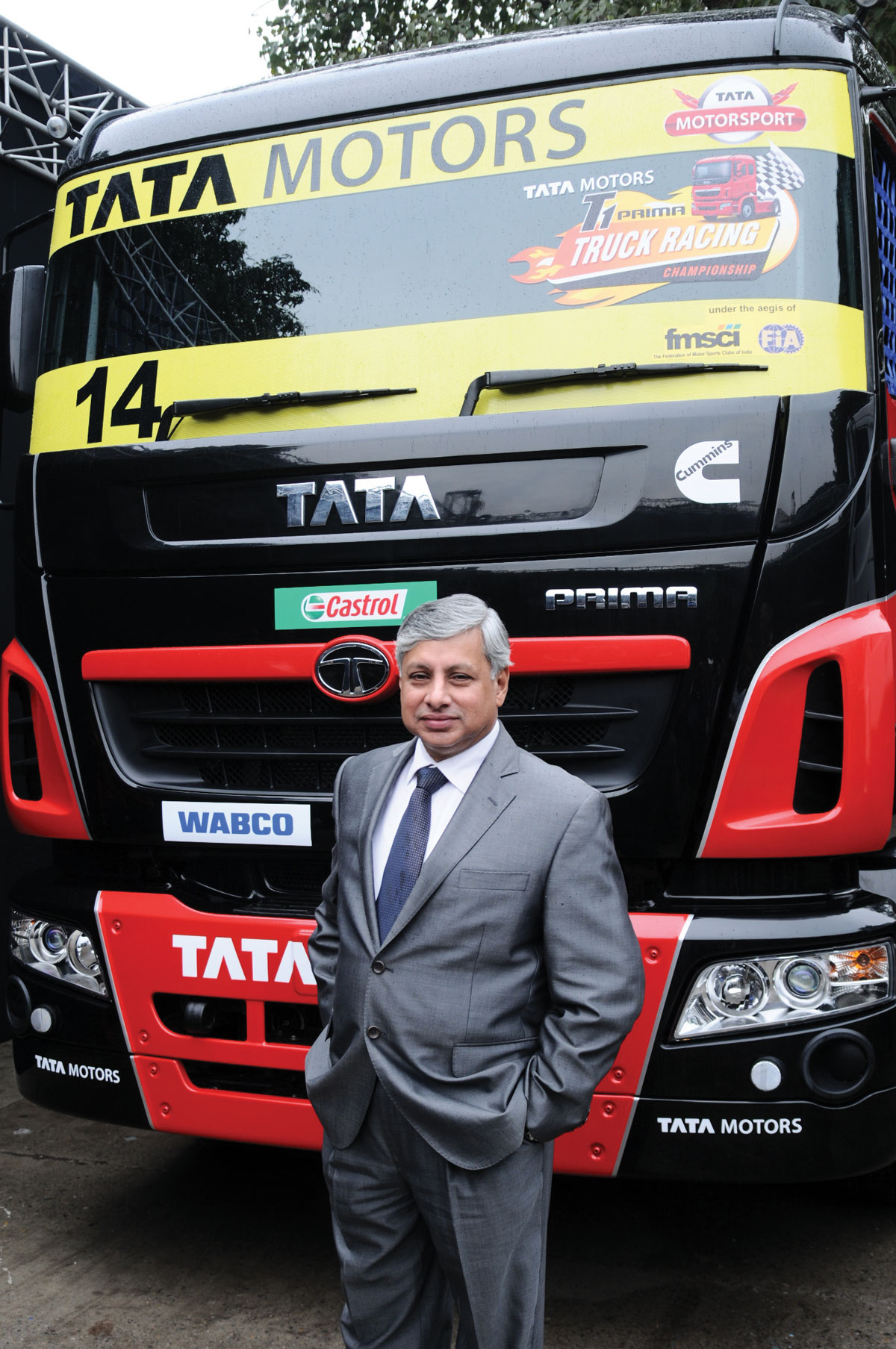
“We have three or four good years and then that’s offset a little by two years of downturn. This behaviour is true all over the world when it comes to commercial vehicles and it leads to heavy hyper competition.
Tata Motors’ approach to business appears to be serving it well. It holds a great market share and is a unique company in the sense that it is the only one of its kind in the world to build every single type of commercial vehicle, starting from the small pickups right through to top-end trucks. Despite the many highlights, its path has not been free of challenges. “One challenge we are constantly facing is that we have to compete with so many different players across the spectrum of our product range,” Ravindra says. “So in the top range we compete with one set of players who are focused on that business, and then in the middle and the lower end we compete with a completely different set of players who are focused on that particular segment. That’s a big challenge and a continuous one. Protecting the strong position we have in India is crucial. All the global brands are already here and some of them have made commitments in terms of manufacturing setups.
“In the overseas markets where Tata Motors does well in, many local and global competitors are following us with exports from India on similar platforms. We will continue to focus on what these markets need and that will help in staying ahead of other entrants and maintaining our strong market share.”
Commercial vehicles is an industry which has a cyclical nature and this presents another challenge. “We have 3 or 4 good years and then that’s offset a little by 2 years of downturn. This behaviour is true all over the world when it comes to commercial vehicles and it leads to heavy hyper competition. During the down times we have to shift our focus to manage costs better and improve our relationships with customers so that we are able to remain profitable during periods where all sorts of offers are being made in the marketplace. This is one of the major areas of challenge for us but it’s also a very interesting one.”
Looking to the future, Ravindra has big plans for his division within Tata Motors. He aspires to position Commercial Vehicles among the top three companies in the global sector within the next three years. “If you look at some of the analyst forecasts, they are putting Tata Motors as one of the leading players in the world by 2020 or 2025. To actually realise that we will obviously need to expand our global presence. Currently our operations outside of India are 15–16% of our total business. Initially we would like that to reach about 25% within a 2 to 3 year timespan, and then gradually increase that to 50% over a slightly longer period. This will enable us to be truly a global company. The other thing that will stay at the top of my mind is technology and bringing innovative electronics into the vehicles that we manufacture and sell. One of the things happening in India at the moment is that the government is pushing regulations out fairly rapidly.
“On April 1 2017 we are going to be introducing BS 4 emission norms which are largely based on Euro 4 norms. In April 2020 the industry needs to leapfrog BS 5 and move to BS 6. This means that we actually won’t be very far away from what the Europeans and the more developed markets have as their standards.
“So in terms of the products, technologies and electronics, we won’t be too far away from the rest of the world, which is a fantastic thing.”

